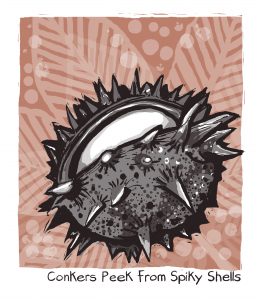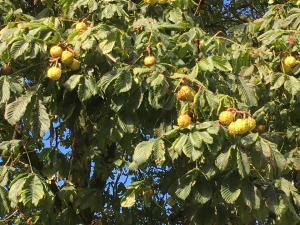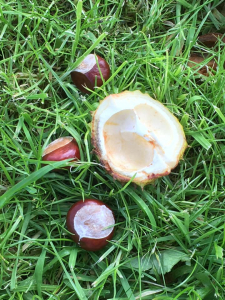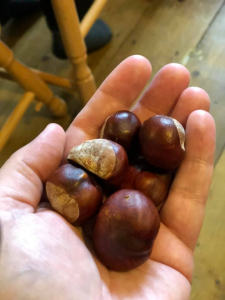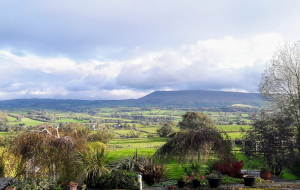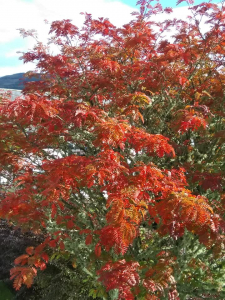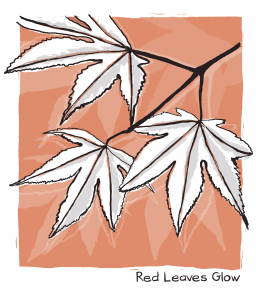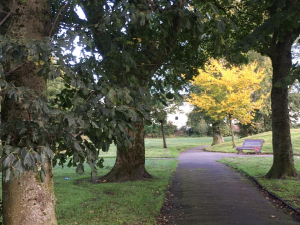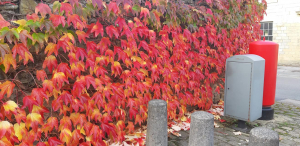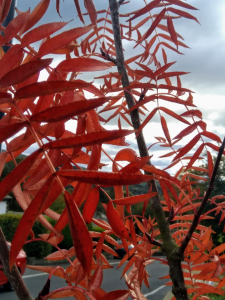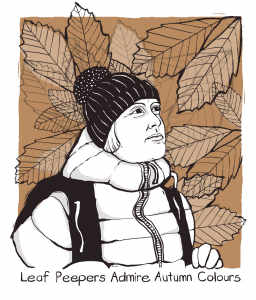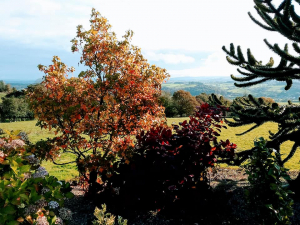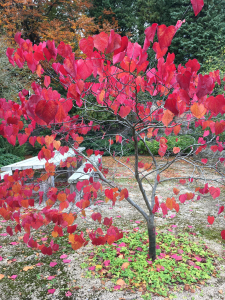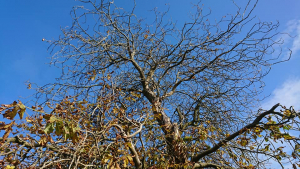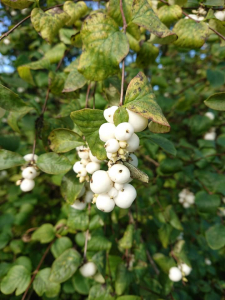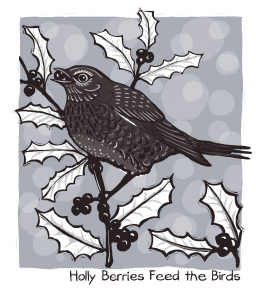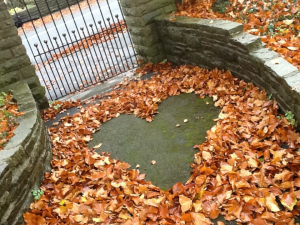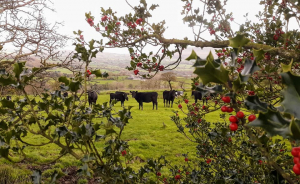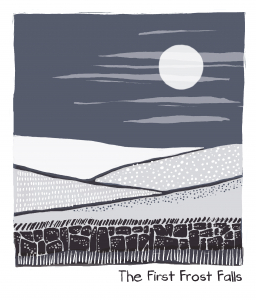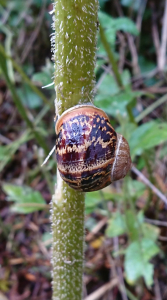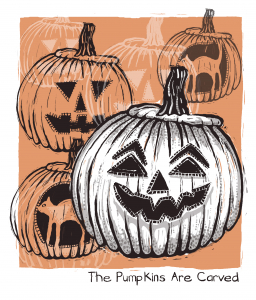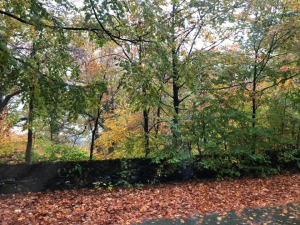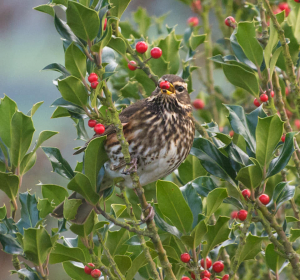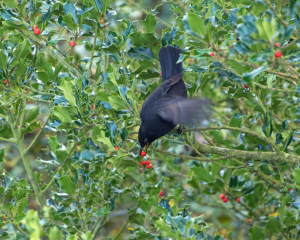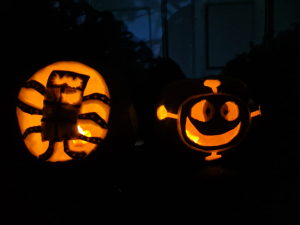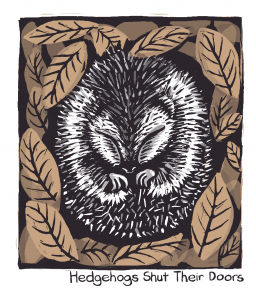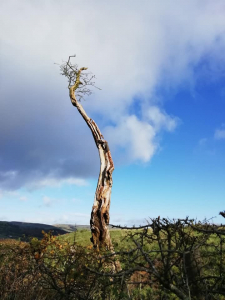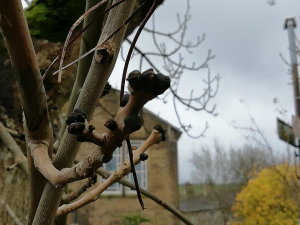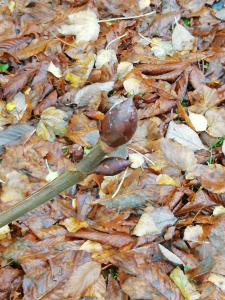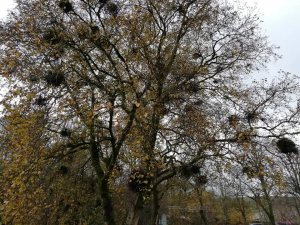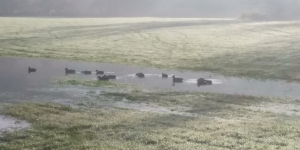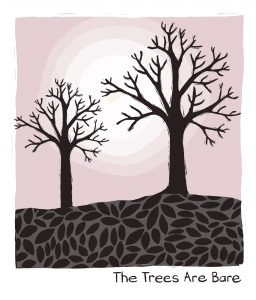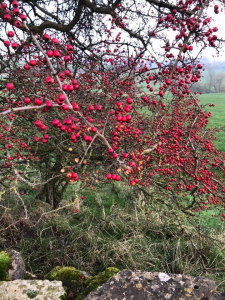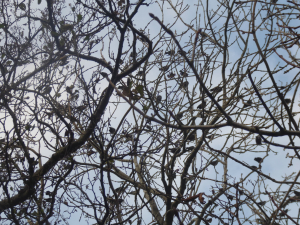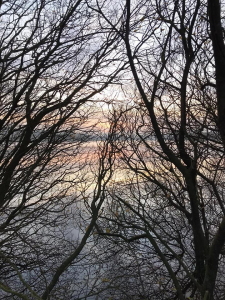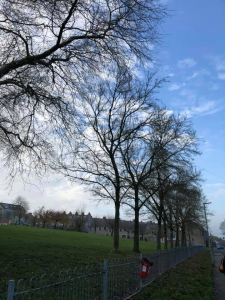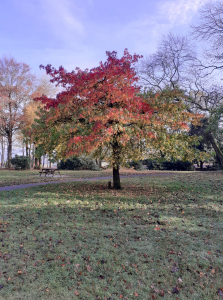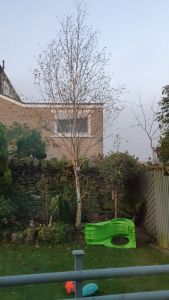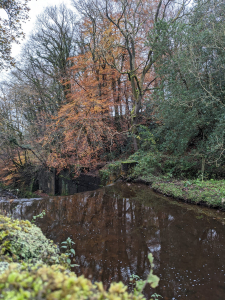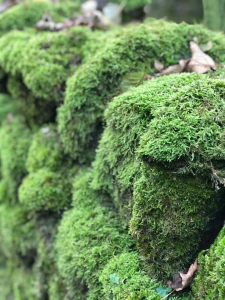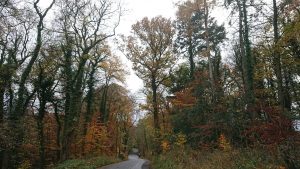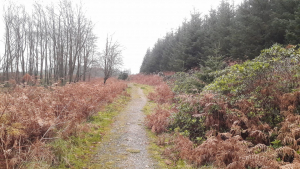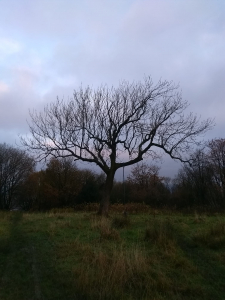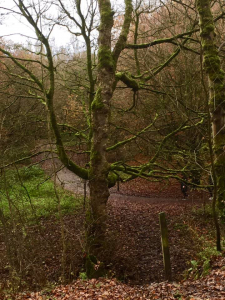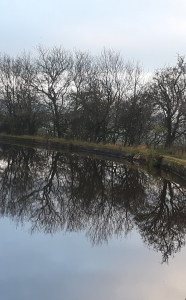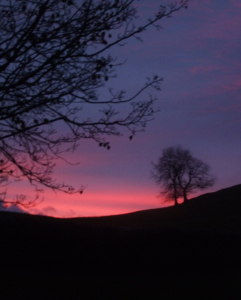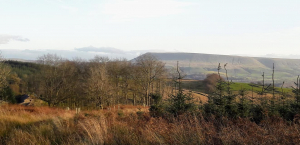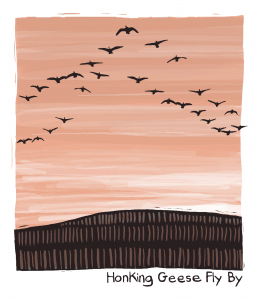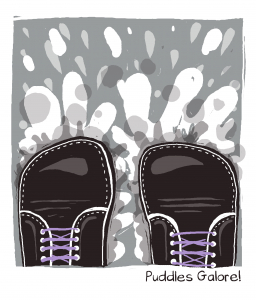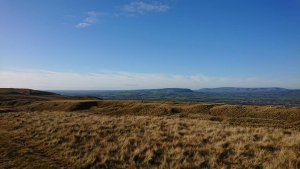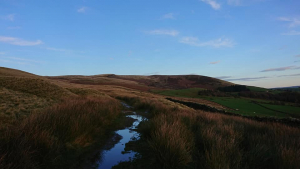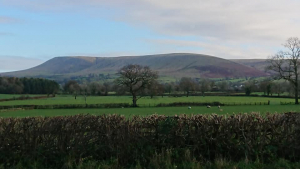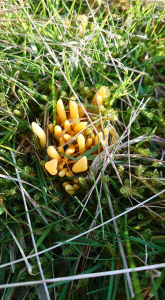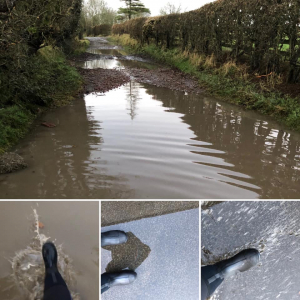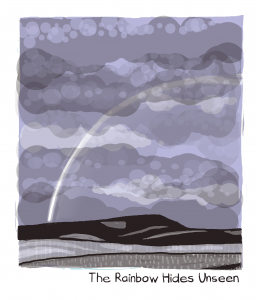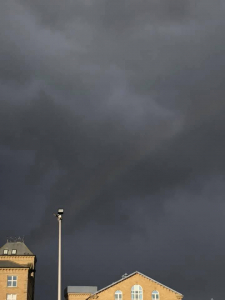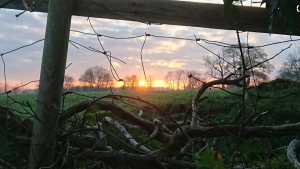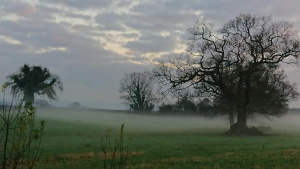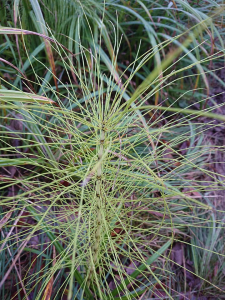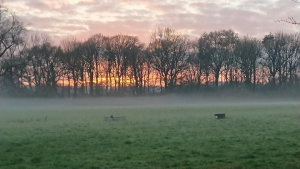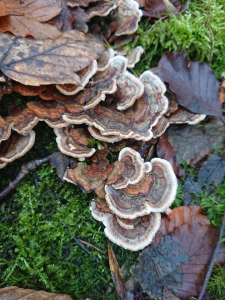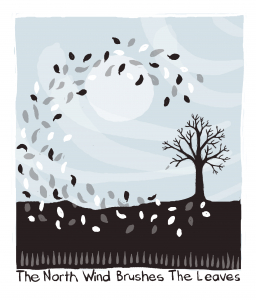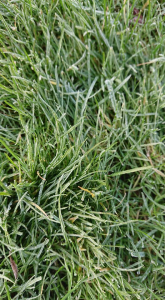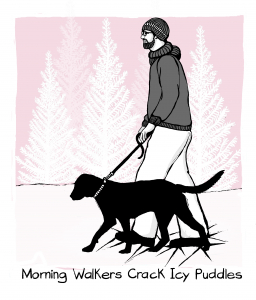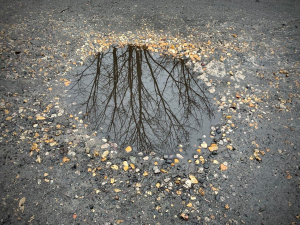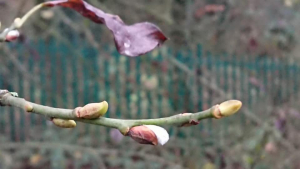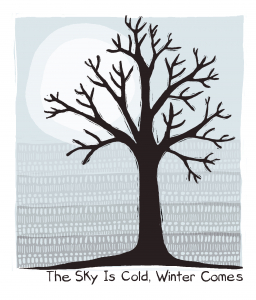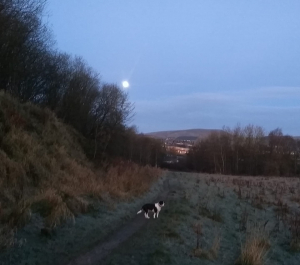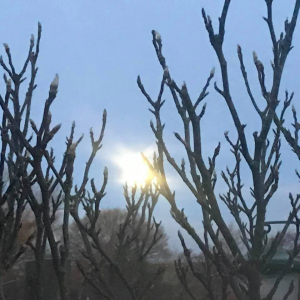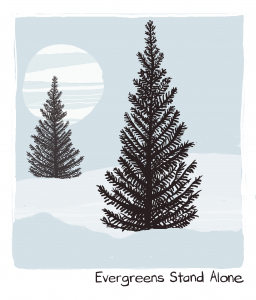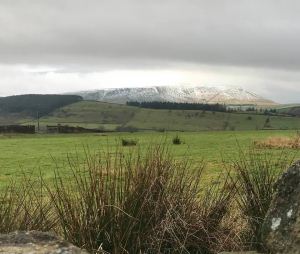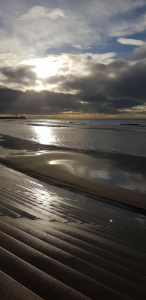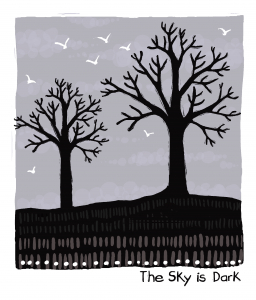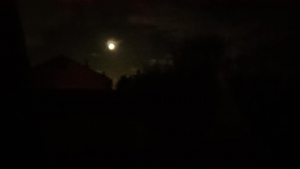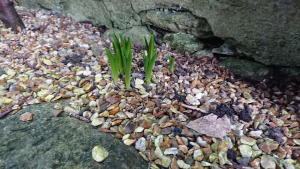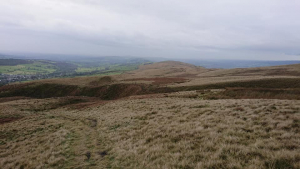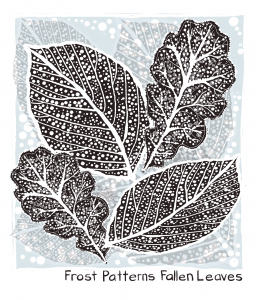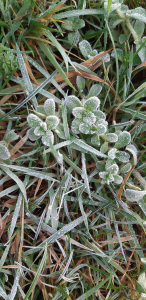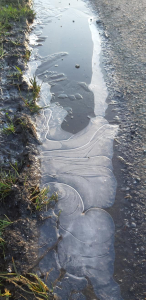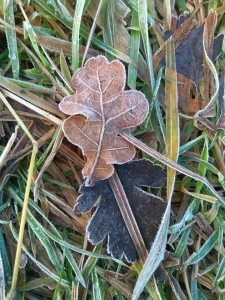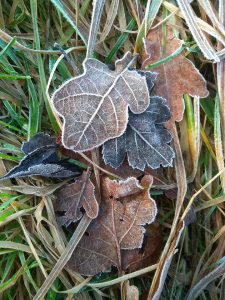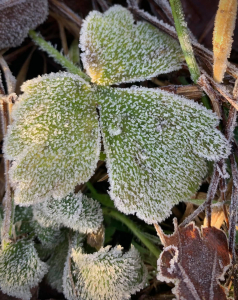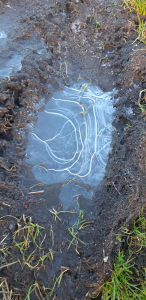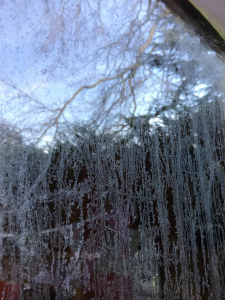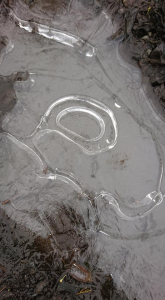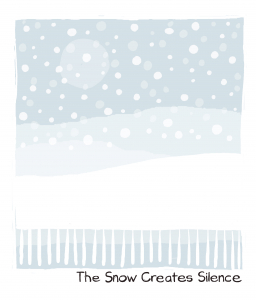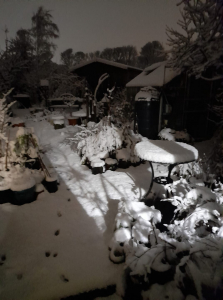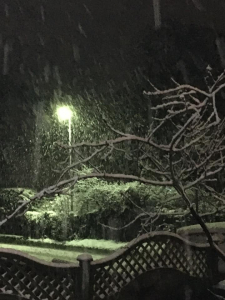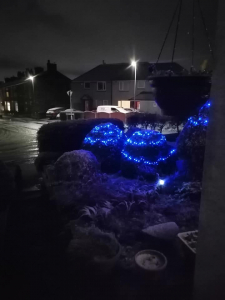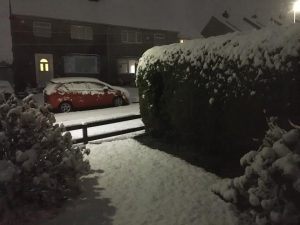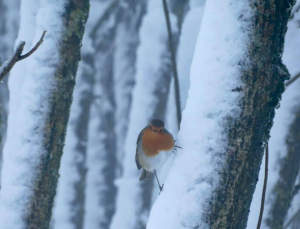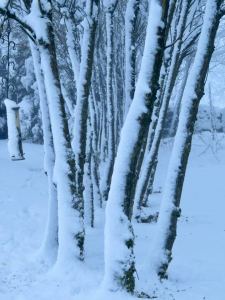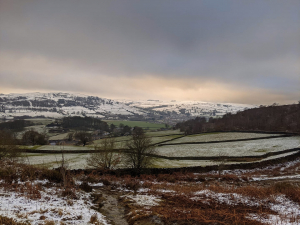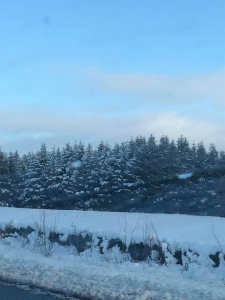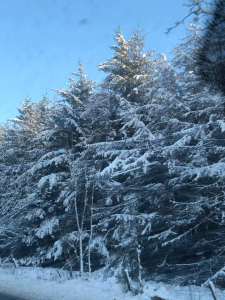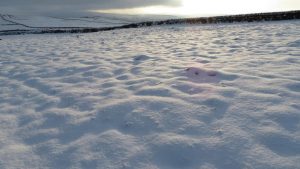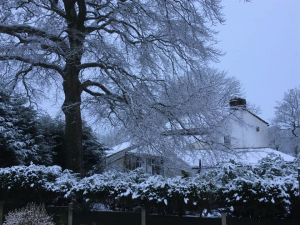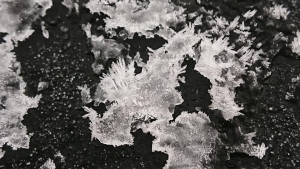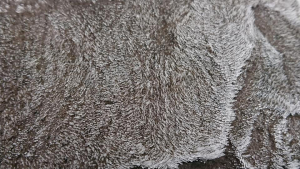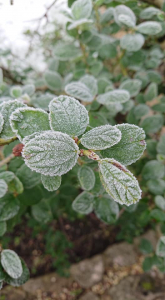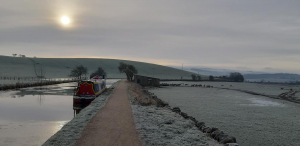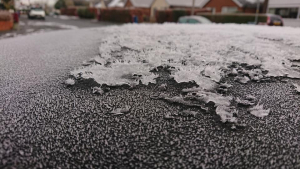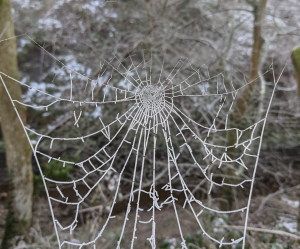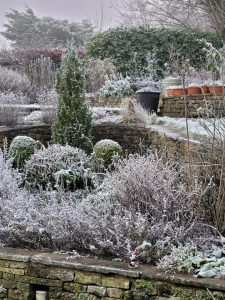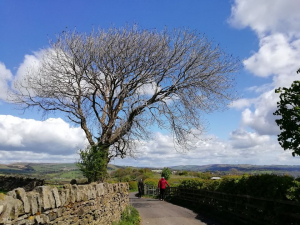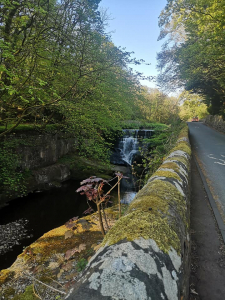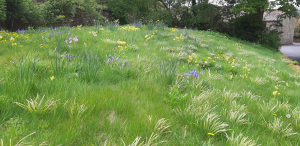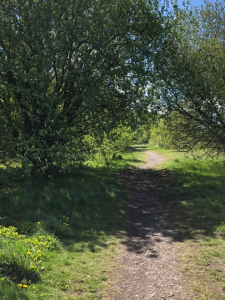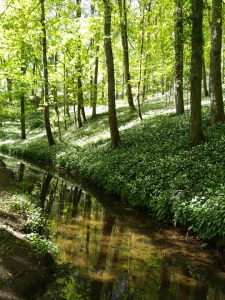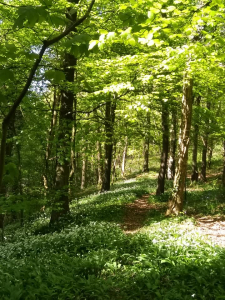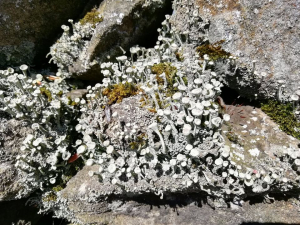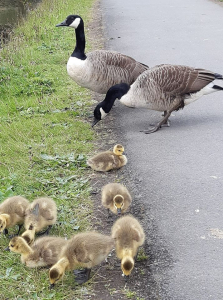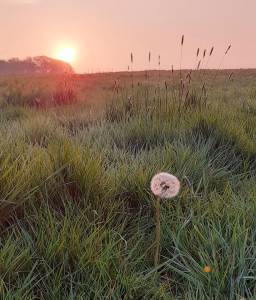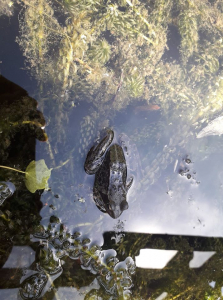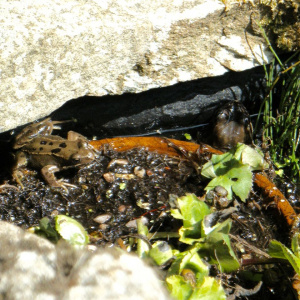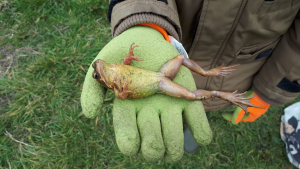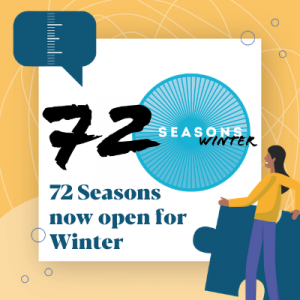In 2020, for the project 72 Seasons, we are working with a group of volunteers – our seasonal seekers – to rename the year in nature. Every 4 or 5 days we start a new season. Our seekers are helping us to notice the changes in nature. Throughout they project they complete health and wellbeing surveys as we monitor the changes that they feel as they move closer to nature.
Our ultimate goal is to have an agreed list of 72 Seasons which are easily noticed, things you can see even if you don’t have a garden or are able to go for long walks or reach the wilder spots. We are running this project in the area around Pendle Hill and it will be a Lancashire-specific, or possibly North-West-specific, list of seasons when complete. We also hope it will have been fun for people to take part in. We had planned to do some of the work purely online and some in person. The in-person elements have been postponed but the online only has positively thrived.
Here is a blog post all about how Spring went. We did this for Winter previously and there is a link to that post here, in case you prefer to read in order.
If you have just read all about the changes in Winter, you’ll have noticed that people started to keep an eye out for previous seasons. Well, the magnolia crept into this season…
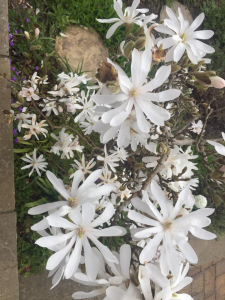
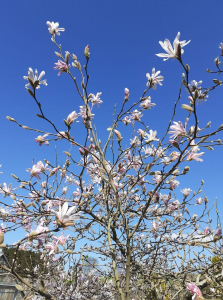
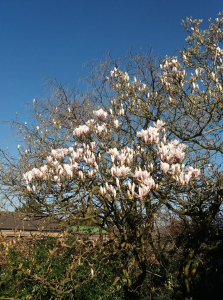
Pictures by Tammie, Ellen and Helen, who were delighted to find the magnolia blooms.
I do really like the way people take on noticing the ‘season’, it becomes personal to find it. I even find myself looking at my list as I go for a walk and thinking about what I might be able to notice in advance and what might be taking its time. You cannot rush nature, it does its own thing, and you have very little control in general. I think that is the comfort of the project. Most of the seasons chosen are mostly free from too much person-interference, and the changes are designed to put you in the bigger natural world.
We never could have predicted that this project around noticing nature and wellbeing would have such a turbulent year to follow. It almost feels unreal that in 2020 we happened to carry out a year-long nature project that people can take part in from home. As a researcher you cannot get much luckier than measuring wellbeing with a group of people both before and during Covid and hopefully continuing as we come out of Covid. We have measured wellbeing and health in detail during the most impactful year, with dramatic changes in life and huge effects on wellbeing. We have been there, live, measuring away and running the project, mostly just as planned. It is also crucial to note that nature almost feels like the only silver lining of Covid; our rivers cleared up, the skies were free of aeroplanes, and traffic was almost silent. Looking at Spring happening, quite normally, while the whole world around us changed beyond all recognition, was a source of comfort for me and for many others taking part in the project.
“This year with lockdown I somehow feel even more aware of nature and how it is thriving and blossoming without us – almost as if it is benefiting from our absence. Quite humbling.”
“I don’t know if it’s what we are going through at the moment but I’m noticing the different trees and how they open up and the different time trees open up… the glorious different green colours in the trees. I’ve noticed the blossom and spring flowers and been sending photos to my mum as she has missed seeing all the spring flowers while out and about. It makes me realise what we take for granted usually and is opening my eyes to the wonder around the beautiful part of Lancashire I am so fortunate to live in and be able to see while in lockdown.”
“Really enjoying taking part. It’s particularly good to focus on nature during these weird times.”
Season: 31 March – 4 April; Daffodils Dance in the Breeze
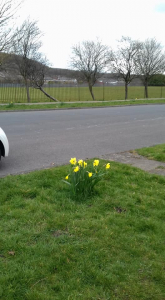
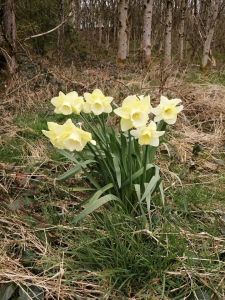
Pamela took the left photograph on 9 April and Veronica took the photograph on 31 March
This was a new season – one we created based on what people noticed, as our original estimate of ‘Thunder Raises its Voice’ proved wrong. We do replace quite a few seasons. ‘Kirsty Daffodil’ is a nickname of mine. I resisted using daffodils as I thought it was a bit too much about me! The daffodils won through though. I suppose it wouldn’t be a British spring without them.
And the seasons were already starting to blur! Proving that the seasons do “march on without us” as one seeker said. There was a real feeling of excitement as Spring, sprung!
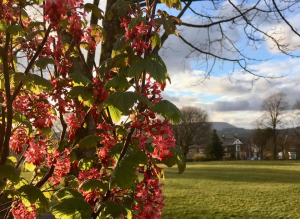
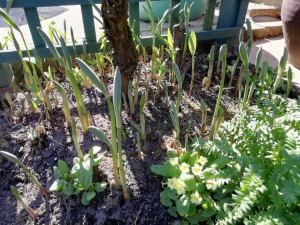
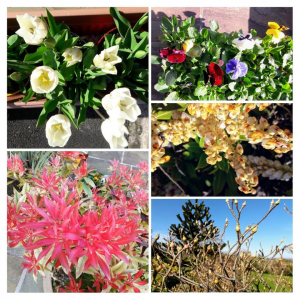
Jackie took this wonderful image of redcurrants flowering with Pendle Hill peeping through in the background, Sue took the photograph of Solomon’s Seal springing up among the daffodils and then a different Sue shared a collage of Spring flowers.
Season: 5 – 9 April; The Swallows Arrive.
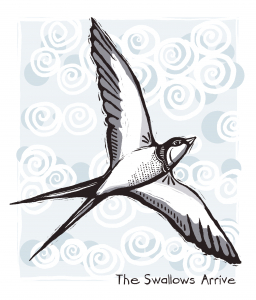
As I write this post, the season is ‘The Swallows Leave’ and their time with us is brief, approximately five months – When they arrive, they chatter, they raise one or two broods of young, and then they go. They know how to make an entrance, and how to keep us keen! The shapes of them flitting and swooping over the canal, has brought me much happiness this year – consternation also, as I try to remember which is a swift (all black) and which is a swallow (white, below).
Caroline managed to get a photograph of a swallow on 12 April. They are so fast it can be hard to catch on camera.
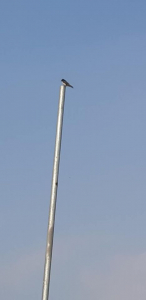
Season: 10 – 14 April; Yellow Forsythia Gleams
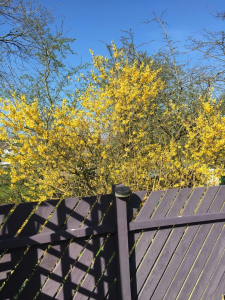
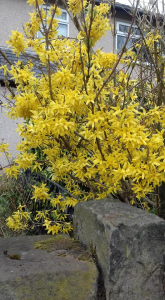
The first image here was taken by Marian on 9 April and the second by Veronica on 31 March.
Our Facebook group of seasonal seekers continue to learn together. I send out longer emails explaining the seasons and do try and research and share interesting snippets. In that way people can choose how involved they want to get.
One seasonal seeker, Deborah mentioned “The garden smells wonderful after last night’s rain and the hellebores are at their best at the moment. This smell is ‘Petrichor’ (thanks Kirsty Rose Parker, hadn’t heard this word before so I looked it up) it’s the earthy scent produced when rain falls on dry soil. The word is constructed from Greek petra (πέτρα), meaning “stone”, and īchōr (ἰχώρ), the fluid that flows in the veins of the gods in Greek mythology.”
It is wonderful to get feedback on how people are using the information and learning more.
People started to share the parts of spring that meant something to them…
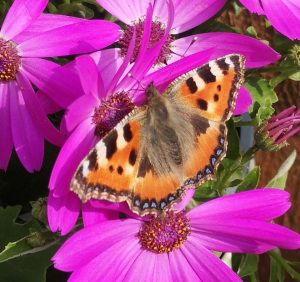
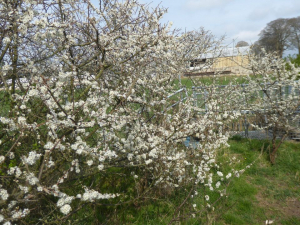
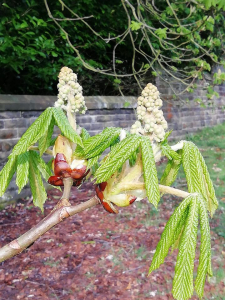
On 10 April our spring seekers were on fire! Anita found a butterfly – Sally shared this blossom she found and Sue found a horse chestnut tree starting to grow its flowers.
Not all of the group were out and about as – some people were shielding at home at this point. People started to share more paths, and larger views, for the people is there a cure for impotence who were not getting out so much – a series of virtual walks and paths, organically created within the group.
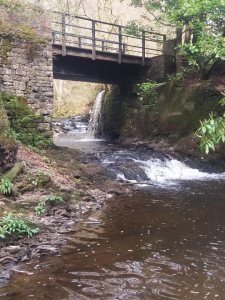
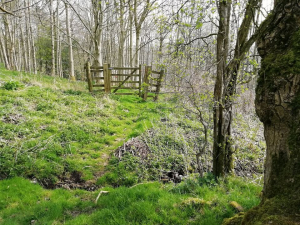
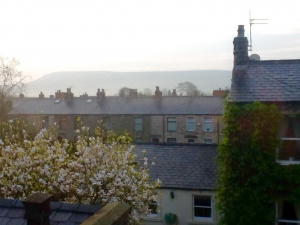
Chelle shared this Spring View on 13 April, Sue shared an ‘Into a Silver Birch Wood’ on 10 April and Judith shared this Early Morning View of Pendle’ on 11 April. Note the magnolia, creeping into shot there, almost stealing the limelight. I noticed that people were echoing our style of describing the seasons, and making it their own.
In this project we aim to try and engage the senses – sometimes we ask people to touch – or feel the breeze. It is not all about just looking. In April, the scents of the season were also being noticed.
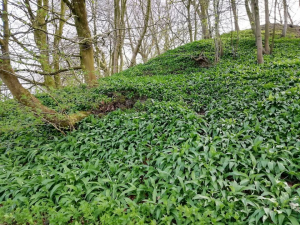
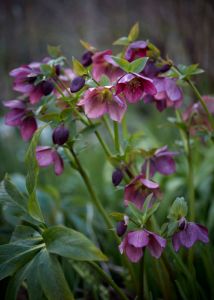
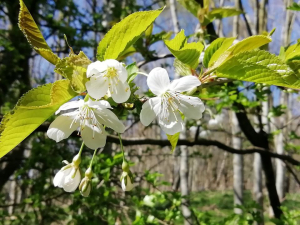
Sue found a carpet of wild garlic on 15 April, Deborah shared garden smells on 11 April and Sue shared a blossom photograph on 15 April.
Season: 15 – 19 April; Lambs Jump in Green Fields.
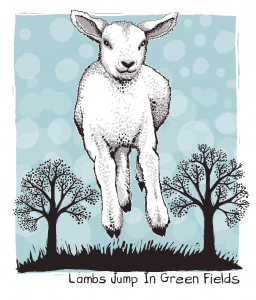
It’s an iconic image of Spring, and particularly so in our neck of the woods. Lambing time and spotting the first lambs of Spring simply had to be included. We wanted to be a bit more specific and asked people to notice the lambs jumping and being playful if possible and to take a moment to notice the green of the grass and to watch them play. Lamb pictures were popular!
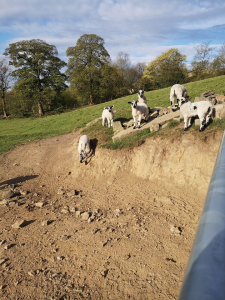
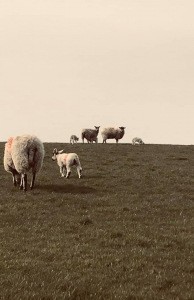
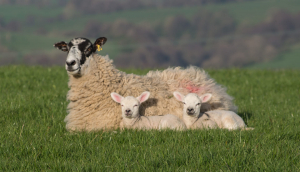
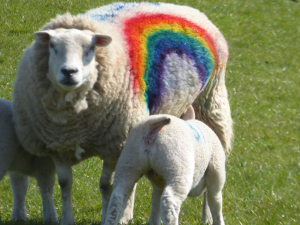
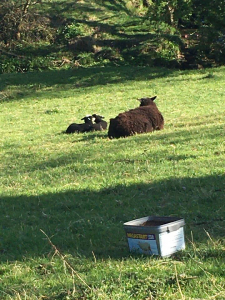
Photographs by Anita on 19 April, Yvonne on 18 April, Sue on 18 April, Sally took a picture of Barnoldswicks famous rainbow sheep, Marian took a picture of these zworbeles sheep on 17 April.
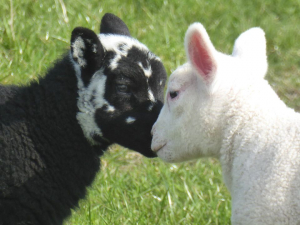
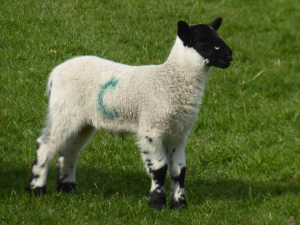
Two further pictures of lambs, both by Sally.
Just a note of explanation on the famous rainbow sheep – I live in Barnoldswick and this was in the height of lockdown, so people could only go for a walk. Most people tried to go out everyday and sometimes we would see friends on the street and stop for glorious five-minute chats across the street or path. Whoever would have predicted how beautiful those moments of connection were and how vital they felt. We actually went for a few family walks to go and find the rainbow sheep after a friend of ours had shouted across the street that was what they were doing. The rainbow sheep had become a local tourist attraction and celebrity. It felt like everyday there was a picture of it shared on social media. The rainbow was the symbol of supporting the NHS, along with clapping every Thursday at 8pm on the doorstep. I have a 4 year old who enjoyed trying to spot the rainbows. I was working throughout lockdown, as my role transferred easily to working from home, but during this hot and sunny spring we would often try and go for a walk about 3.30 or 4 pm, in time to be home to watch the briefing. Writing about that feels a little surreal now. It feels like an awfully long time ago and a whole different time and routine already.
Season: 20 – 24 April; The Tulip Blooms
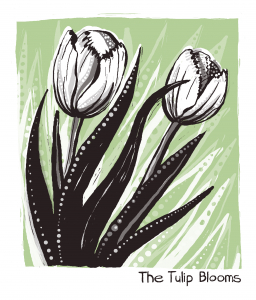
Sometimes we really get a season right and this was one of them. It just worked perfectly.
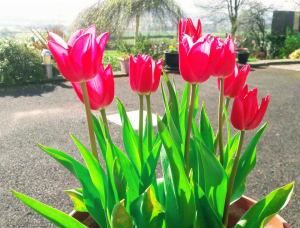
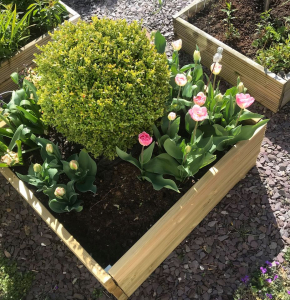
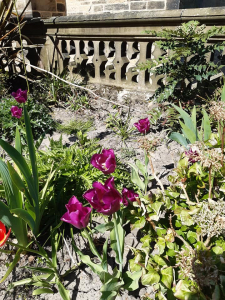
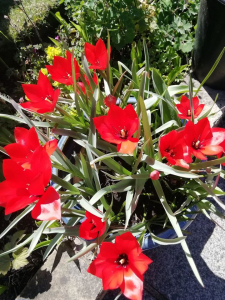
Photographs by Sue on 20 April, Christine on 20 April, Ann and Sue on the 21 April
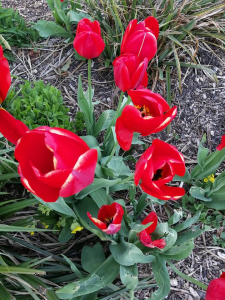
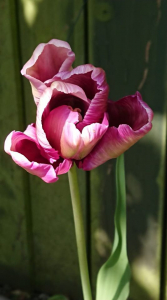
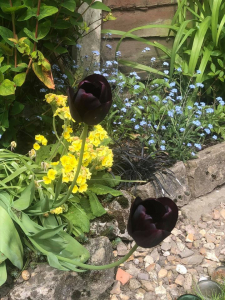
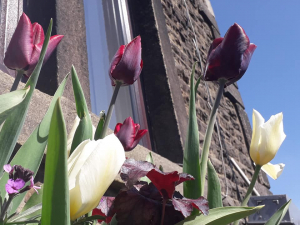
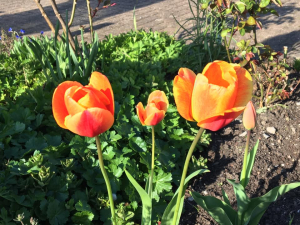
Photographs by Pamela on 24, Michelle on 22, Carol on 23, Jackie on 21 and Sam on 21 April too.
Season: 25 – 29 April; Bluebells Carpet the Woods
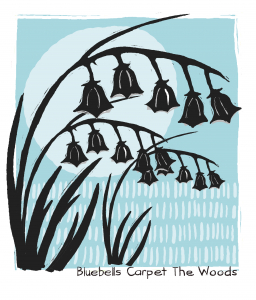
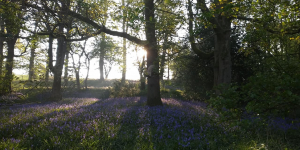
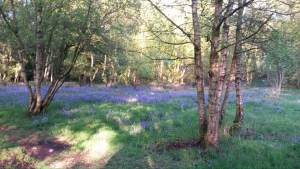
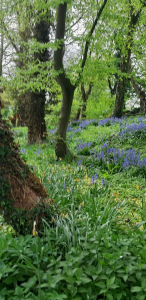
Photographs by Stella – she took this shot on 25 April, and Janet took the left one on 29 and Caroline found this bluebell carpet on 5 May.
Most years recently I have been to visit the Bluebell woods, but this year it wasn’t possible for me or for many other people to do so. I did feel very grateful for being able to walk to lots of lovely nature spots, and this reminded me that not all of us were even able to do that. It also helped me understand more about how the individuals who were shielding enjoyed the pictures of the wilder areas. The Bluebells do make a lovely carpet!
The English and Spanish Bluebell Identification Quest was strong in our Facebook group. Spanish bluebells are invasive in our country and out-compete the more delicate, stronger smelling (in a good way) English bluebell. They can be tricky to tell apart and our seasonal seekers were keen to learn the differences and to find the rarer English bluebells.
Here are some Spanish ones;
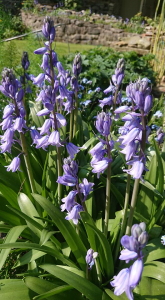
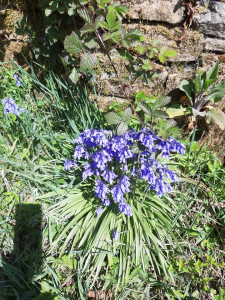
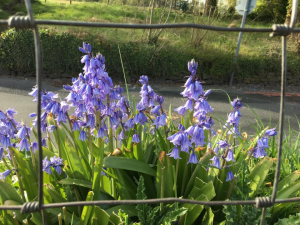
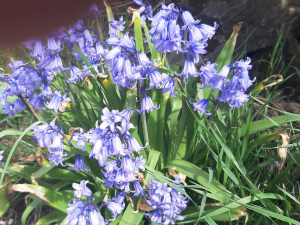
Photographs by Michelle on 25 April, Kath on 24, Sam on 6 May (we kept the debate going a fair while!) and Kath on 9 May.
Here are some English ones, they are a bit harder to find:-
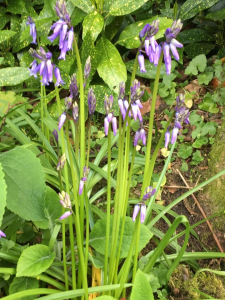
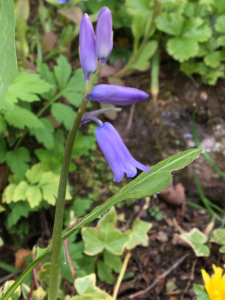
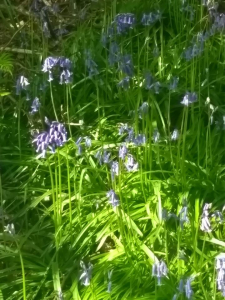
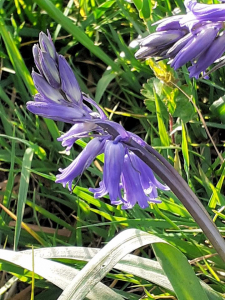
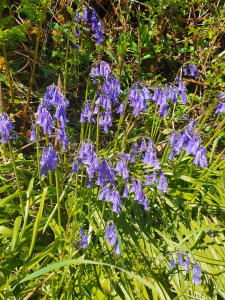
Photographs by Sam – who took the first two photographs on 6 May, – Cathy also found this patch on 6 May, – Georgie took this close up on 26 April and Leanne found this clump on 7 May.
The flowers are longer and thinner, and there are usually less of them. They are not as vigorous as the Spanish ones.
Season: 30 April – 4 May; Trees Turn Green Again
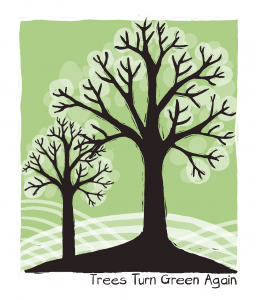
This season really brought out the photographs and people started to share more images. I wonder if it’s because trees from a distance are particularly photogenic?
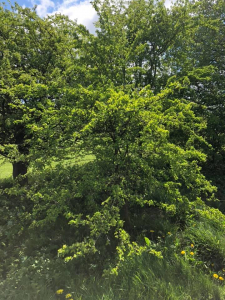
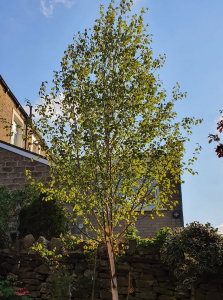
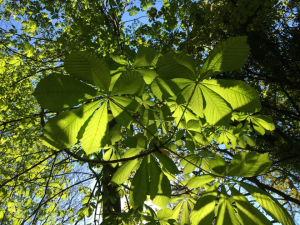
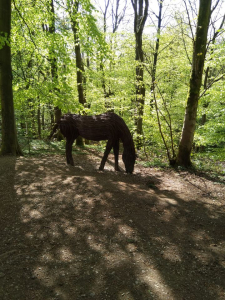
Photographs by Sarah took this picture of green trees on 2 May, Leanne’s ‘Silver Birch Found Its Leaves Again’ on 4 May and Sam took this atmospheric shot of green leaves on 2 May. The last photograph is Jill’s woodland on 6 May.
At this point we also had a discussion about the Oak and Ash trees and the old saying about them. ‘If the oak should bloom before the ash then the world will have a splash, if the ash should bloom before the oak then the world will have a soak.’
Sue took this image of a bare ash on 3 May. “The ash looks to be the last one to bloom and we’ve already had our soak!” explained Sue.
I just wanted to mention Sue’s dedication here, she shares regularly and is an active part of our Facebook group.
Here is Sue’s before and after trees! “My husband is getting fed up walking with me as I take so long looking at everything and taking photos!” she explained. Sorry to Sue’s husband, but we are very pleased! That’s exactly what we hoped would happen during this project.
During this time; the group took us on a virtual walk…
Down Anita’s road, stopping by Caroline’s Spring Bank, through Sarah’s woodland entrance, to Jill’s deep woodland, noticing Sue’s fruiting Lichen and just enough time to watch Liz’s geese and their baby goslings before making a wish and watching Georgie’s sunset.
Frog digressions
Cathy shared this photograph on 9 May, and Judith shared this one on 7 May.
I love it when the group go off on one of their own interests – like poo detectives (which I am happy to encourage, but do not want to share pictures of poo here – spoiler alert – they were mostly fox or hedgehog!) It means they are connecting more, and this was important at this time.
Frogs were popular. People would talk about them. “We’ve had two dead ones this year. The first seemed fearless whenever we went near the pond and just kept sitting there, then found it dead in the pond a few days later. The other was just sat on the path!” from Michelle. John was also concerned “I’ve just seen my first tadpoles – incredibly late – and in a bit of water which will dry up soon so they’ll probably die. The lake they normally breed in is already totally dry so none there.” he explained.
Frogs however did gift me one of my favourite photos from Spring!
Janice on 8 May – gold star! This frog looks like the most content frog ever, so clearly some are thriving somewhere.
Season: 5 – 9 May; Wisteria Cascades.
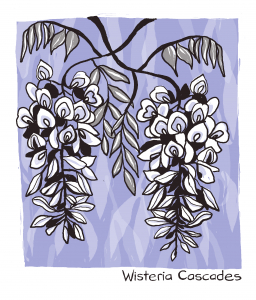
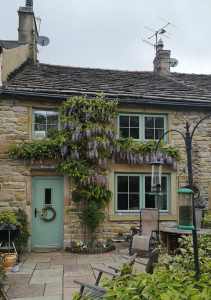
Anita shared this wonderful Wisteria on 11 May. We chose items for the seasons that could hopefully be fairly easily seen, items that most people might be able to spot. We think at least one house in most towns has a Wisteria and they are often at the front. Is that correct? Also, we only keep the seasons that more than 50% of our seekers have agreed and found. If it doesn’t make the magic 50% it is replaced. Some make it with 100% agreeing and others are trickier.
One seeker did say:
“I’m intrigued as to how the various seasons are chosen, which flora and fauna are selected and why some prominent ones left out?”
I’ll try and answer that here. We try and match as many of the original Japanese 72 seasons as we can – although that’s probably only a third of the seasons, and then we have to tweak them. There are bears and exotic plants in Japan. They grow rice and lots of other differences, that cannot translate to Pendle and the area around Pendle Hill. One of my passions, is about making sure that people are included. My professional background includes working with vulnerable adults, and I always want my projects to be open to as many people as possible. It was very important to me, and the whole Pendle Hill team, that you did not have to have a garden, or be well enough to climb Pendle Hill to be able to take part. We want to measure wellbeing across lots of people. I also wanted to see if the project could have an online component so that people who worked full time or worked shifts, or were carers or parents of young children could still take part. Those factors meant we have tried to select the parts of nature that are easy to spot from pavements. When writing them I often thought ‘could I see this on a walk to the bus stop, could I see it in a garden I walk past?’ So, it’s actually about including people rather than prominent nature. We never knew how important that online component would become. We do still hope to be able to complete some face-to-face elements of the project, hopefully in 2021.
Season: 10 – 14 May; Blossom Petals Scatter the Ground.
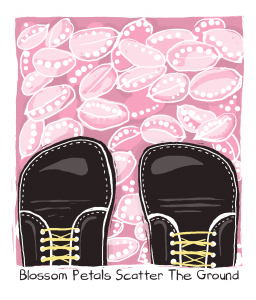
The images throughout the project by Cath Ford are all wonderful, but the ones with shoes feel particularly noticeable to me. As soon as I see these shoes, I feel like I am looking down at Cath’s feet! If you want to know more about Cath’s work, her website is here.
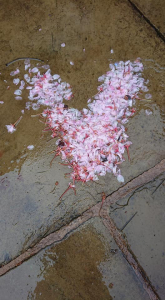
Few blossom images were shared in this season – Some seasons really pop and some don’t. That’s the nature of an experimental project like this one. No matter how much people enjoy the seasons, people have other things going on, or they struggle to sustain the same level of enthusiasm all year around. However one of our seekers shared these heart shaped petals, on 1 May.
Season: 15 – 20 May; Birdsong Fills the Sky
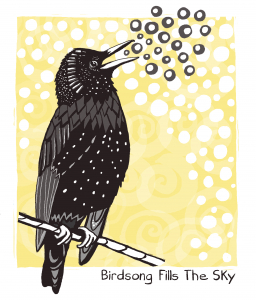
This season is new, we actually moved a few seasons around – some were a bit early, some a little late, and others just didn’t work as well as we had planned. When that happens and we need a new one, we read all the comments carefully to see what stands out.
One seeker told us:
“The seasons are spread out much more- start earlier. I am really enjoying the project. I look forward to looking at the posts and appreciate the range of followers, ranging from the experts who know or research all the names, people who are comfortable to ask questions and me who gets easily confused regarding the season we’re supposed to be in, not great with Facebook and still comfortable. It’s wonderful to join with others who appreciate nature, it’s colours, textures…”
And another said:
“Noticed lots of birds have nests and chicks. We have blue tits, coal tits, blackbirds, goldfinches, sparrows.”
And another said:
“I enjoy participating. I have seen baby goslings and baby moorhens on the river. Swifts and swallows and house martinis during the day and plenty of bats at night”
Which all combined to give us the confidence to move the seasons, and to decide on birdsong as the defining season here.
Season: 21 – 25 May. The Lilac Flowers.
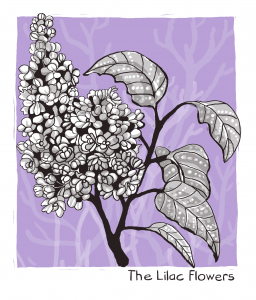
Did you know that Lilac in flower on 25 May has been immortalised in literature?
The People’s Revolution of the Glorious Twenty-Fifth of May is depicted in Terry Pratchett’s, ‘Night Watch’, which has a similar story to Les Miserables. Survivors of the revolution are said to wear lilac, each year on 25 May to commemorate their survival. Following Terry Pratchett’s announcement that he had been diagnosed with Alzheimer’s, fans called for 25 May to become ‘Wear Lilac’ day in support (now memorial) of Pratchett and to raise awareness of the illness and to raise vital funds for the Alzheimer’s Society UK.
As a Terry Pratchett fan myself, I had always wanted to include The Glorious Twenty-Fifth and was delighted that this season worked out so well! Also, Night Watch is a wonderful book. Well worth a read.
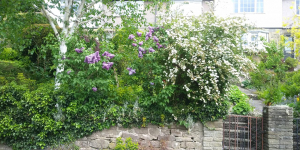
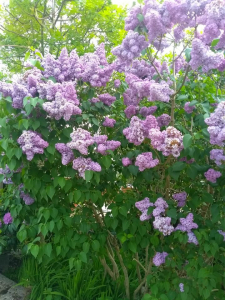
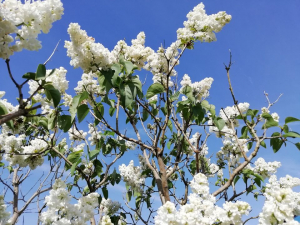
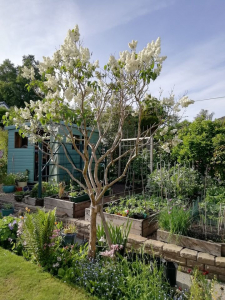
Photographs by; Stella on 17 May, Cathy on 21 May and two photographs of White Lilac by Sue on 22 May.
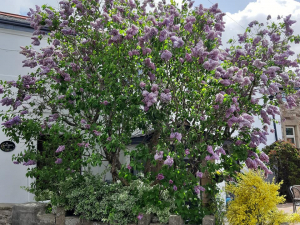
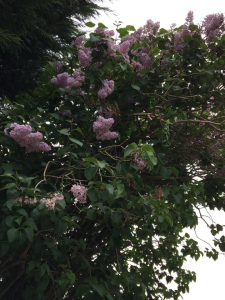
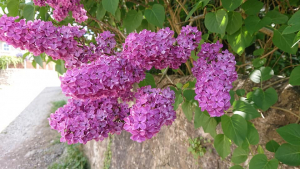
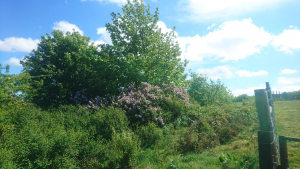
Photographs by; Kath on 22 May – Sam, Michelle and John, all on 21 May.
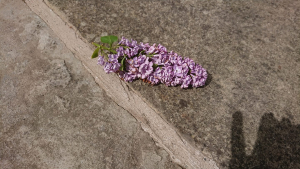
Photograph by Michelle, “look what the wind brought on 22 May.” Lilac was another win!
Season: 26 – 30 May; Cow Parsley Lines the Hedgerows
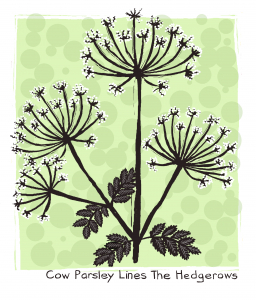
One of the really nice parts of the project is that people can take part in lots of different ways. Some are really knowledgeable about nature and some are new to lots of the seasons. That is one of the special parts of nature, it doesn’t judge and does welcome everyone.
One seeker told us:
“I’m not sure what cow parsley looks like! I’ll check on the internet.”
And another said:
“The project is educating me all the time”
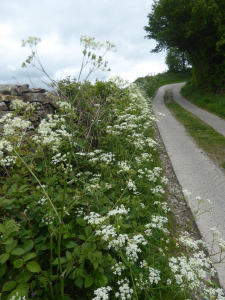
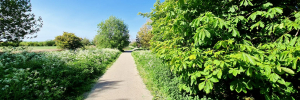
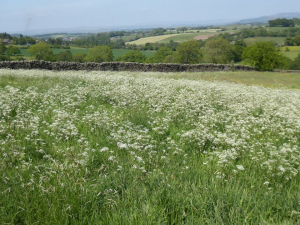
Sally took this photograph on 26 May and John took this on 29 May. Then Sally found a whole swathe of cow parsley on 28 May.
A few other shares – we do seem to love trees as a group!
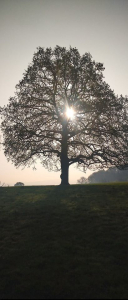
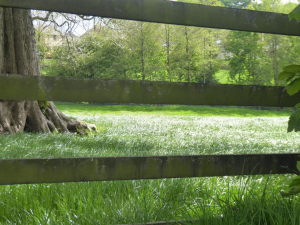
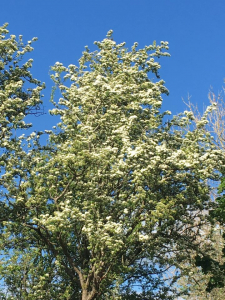
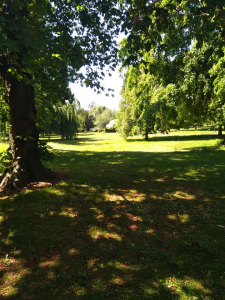
Tim shared a ‘Sunrise Through the Old Oak Tree’ on 26 May, Sally shared this beautifully framed image on 12 May, Marian shared this Hawthorn blossom on 11 May and Jill was back sharing the woods again on 31 May.
Season: 31 May – 5 June; The Elder Flowers.
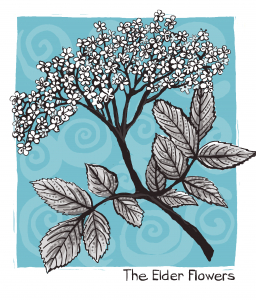
We often see elders on the paths, and public parks, and along the canal locally. They are pretty hardy and seem to thrive in a range of places. Due to their flowers being quite distinctive, they are a good one to ‘spot’. And ‘spot’ people did!
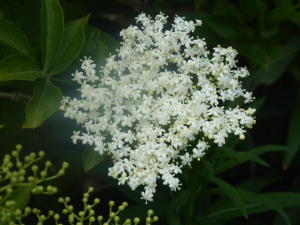
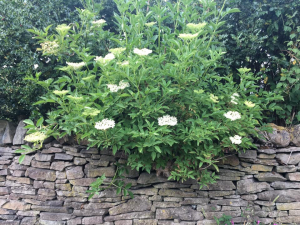
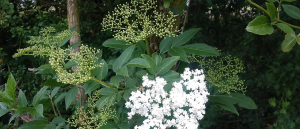
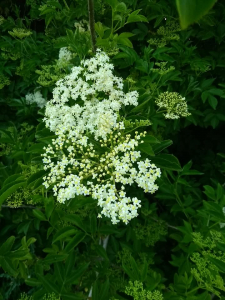
Photographs by; Sally took this on 31 May – Sam took this one on 4 June – Tim found these on 4 June and Cathy found this on 31 May
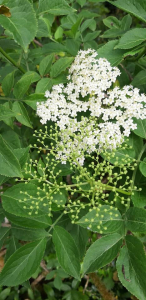
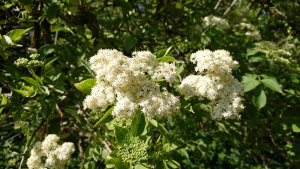
Photographs by; Caroline found this on 5 June and Michelle found these frothy ones on 5 June.
The elder also lasted really well this year.
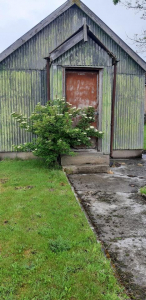
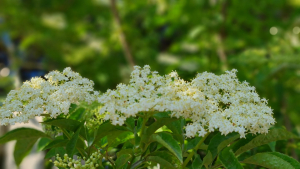
Caroline took this gorgeous picture of an elder still flowering 13 June and John found this on 4 June.
As I write this part of the post, (it takes me a long time to do a whole season story!) the season is about Elderberries. We have come part way in the cycle. Nature really does just keep on going.
Season: 6 – 10 June; The Blackbird Fledglings Leave the Nest
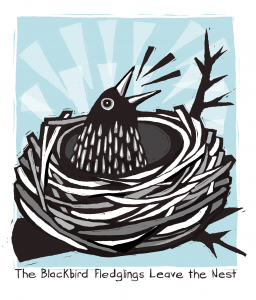
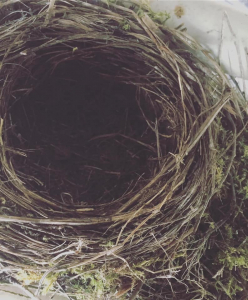
Photograph taken by a friend of mine, who isn’t actually taking part in the seasons, but did give me permission to use the photograph. This is by Philippe and was taken on 8 June showing an empty blackbird nest. I was so pleased to see this as it can be really hard to spot an absence. We want the seasons to be a nice mix, which shows the varied wonder of nature. Sometimes that is about noticing some change, or noticing when something stops, or a feel that these less tangible seasons are part of the wonder of nature. We do think they are important parts of the whole make up of nature affecting wellbeing. It is something that is more intangible, and harder to describe a feeling.
One seeker told us:
“It makes me stop look and listen more. I look up and down not just in front 😊”
And another explained:
“An insight into local nature in our immediate environs, plus the feelings that invokes.”
This makes me feel more confident that we are creating the space for those feelings to happen. People are exploring nature with all their senses, as they wish and finding what works for them.
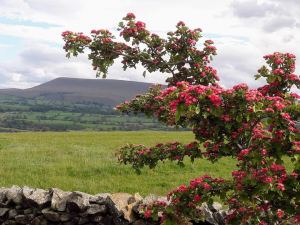
Just at this time, Sue posted this image with the caption ‘Pendle brings us all together’ which was so fitting – in fact it’s the vision for the whole project. Together for our landmark. Bringing people together from both sides of the hill. I think I’d have said Together for our hill! You can read about the project aims here on their website.
Let’s share some of the wildlife noticed by our seekers…
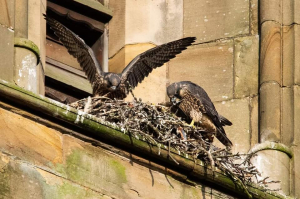
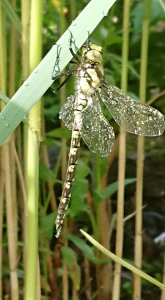
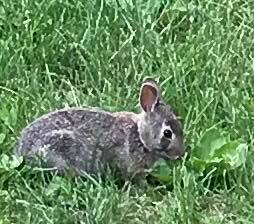
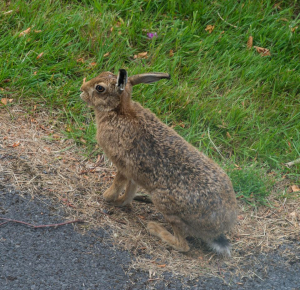
Photographs by; Pamela took this photograph of Peregrine Falcons nesting at St Mary’s Church in Nelson, Michelle took a photograph of this dragonfly on 27 June. The 8 June must have been a great time to spot rabbits and hares, as Tricia captured a ‘Baby Bunny’ and Sue found ‘Mr Hare’. Apparently Mr Hare is a regular visitor to the garden, but rarely stops for photographs!
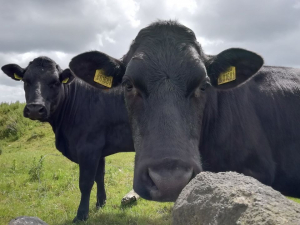
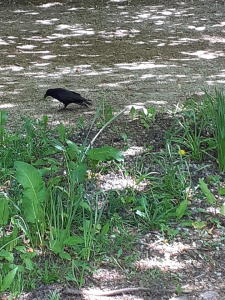
Photographs by; ‘Hi Cows’ by Sue on 29 June and Blackbird spotted by Ellen on 21 May.
We haven’t set wildlife as seasons so much, as they can be hard to spot and we explained about how we are trying to make sure that people don’t have to be able to venture far to be able to take part. At first that was mostly to include people with disabilities who perhaps couldn’t walk to the hill, but during the year this widened to include everyone who was limited in their range by Covid, (which turned out to be everyone, literally everyone!). However the next two were wildlife we did think everyone stood a chance of seeing.
Season: 11 – 15 June; Butterflies Flutter
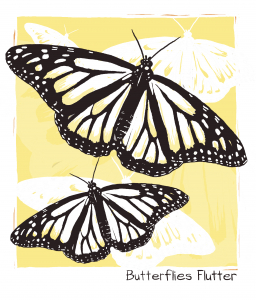
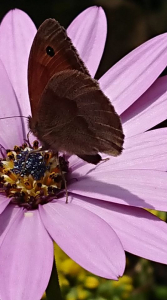
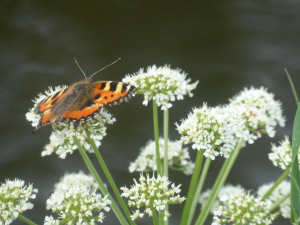
These great action shots were captured by Michelle on 17 June and Sally on 16 June.
Have you noticed how many images I’ve shared from Sally? I think she must be our most prolific photographer! Thanks Sally for all your images, and I’m sorry I had to leave so many out too.
Season: 16 – 20 June; Bees are Busy
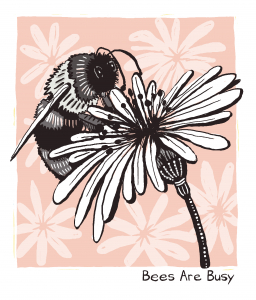
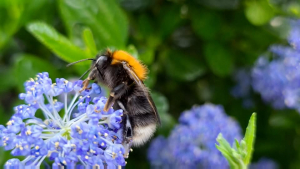
This photograph of a Bee being busy was taken by John on 17 June.
In terms of wildlife, bees and butterflies are both pollinators, and both at serious risk of decline. It’s wonderful to see them and I think they absolutely deserve a place in the seasons, and should be noticed. I wonder if part of the reason they are at risk is that people take them for granted? We still have chance to change this. As bee expert Dave Goulson says, insects breed fast and they just need a few more flowers to thrive. Many of us can do a bit to help by growing a few bee friendly flowers and avoiding weedkillers. We can also all enjoy the fluttering of butterflies and the buzzing of the bees.
Season: 21 – 26 June; The Days are Long
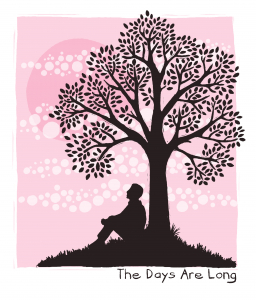
Oh what a lovely season, one of my favourites – Summer solstice, and the longest day. I think this is a really beautiful image by Cath too. We are currently discussing what we are going to do with all the images and how we are going to share them. We’ll keep you posted!
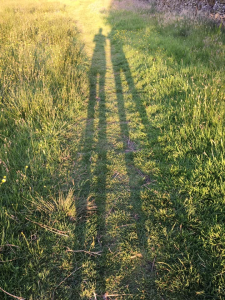
This is a photography by Sam called “the days are long and so are the shadows!” I could not love this image more. It works so well with the season, and the project full of seasonal seekers, and the image Cath created above.
Time for one last nature walk in Spring… ( our seasons don’t really match up to Spring and Summer, but we call them that as people seem to understand it better than first quarter, second quarter and so on!)
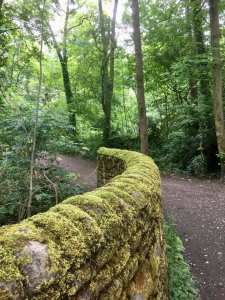
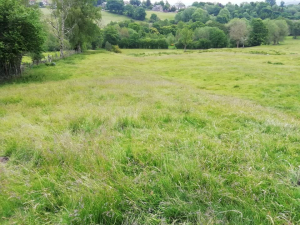
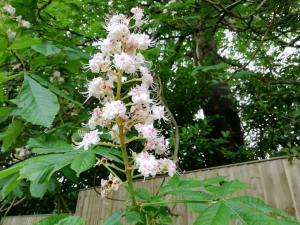
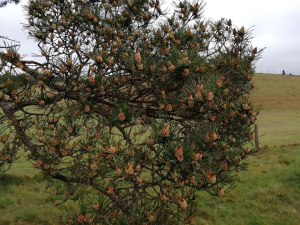
Jackie shared the mossy wall at Townley on 8 June and then Sue lent us her expertise to share a lush meadow on 29 June, a horse chestnut in flower on 9 June and pine cones on the tree also on 9 June.
Wait a minute is that the same meadow Sue shared earlier?
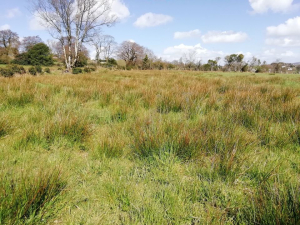
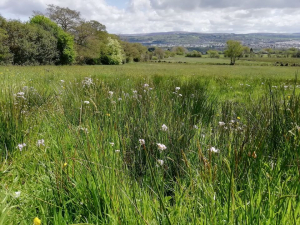

I think it might be! Let’s hope Sue is still taking part (the programme is anonymous – only names on the Facebook group which is private) and will take some pictures later in the year!
Season: 27 June – 1 July; The Scent of Roses Fills the Air.

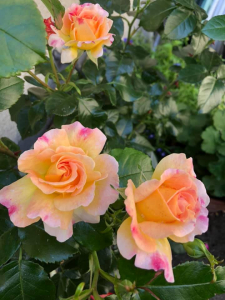
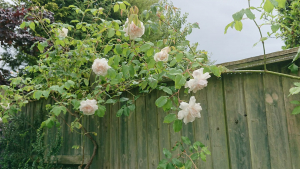
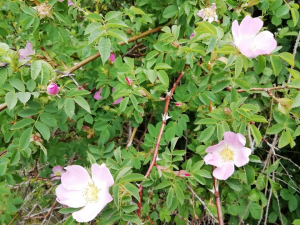
Sarah captured this rose on 27 June, Michelle caught this lovely climber on 27 June and Sue found this older, wilder rose (preferred by bees!) on 29 June.
Our final season of Spring – is all about Roses. This was a must, as I’m Kirsty Rose Parker, the lead on this project, and I love roses! What a way to leave and move into more summery seasons, with the scent of roses all around us!
Thanks for reading.

